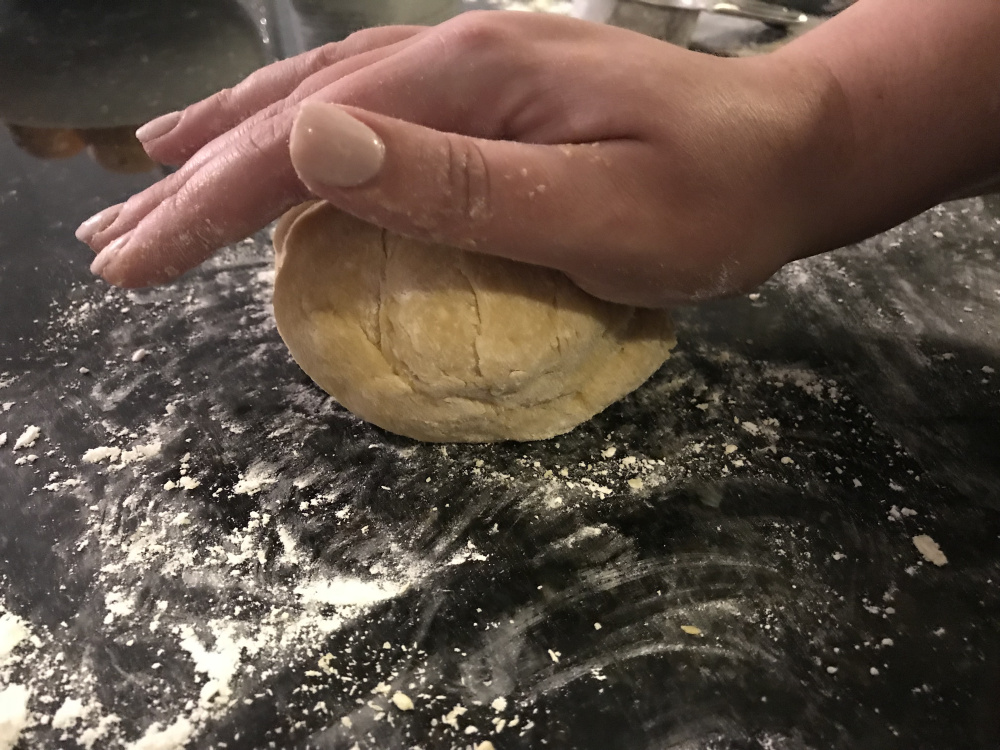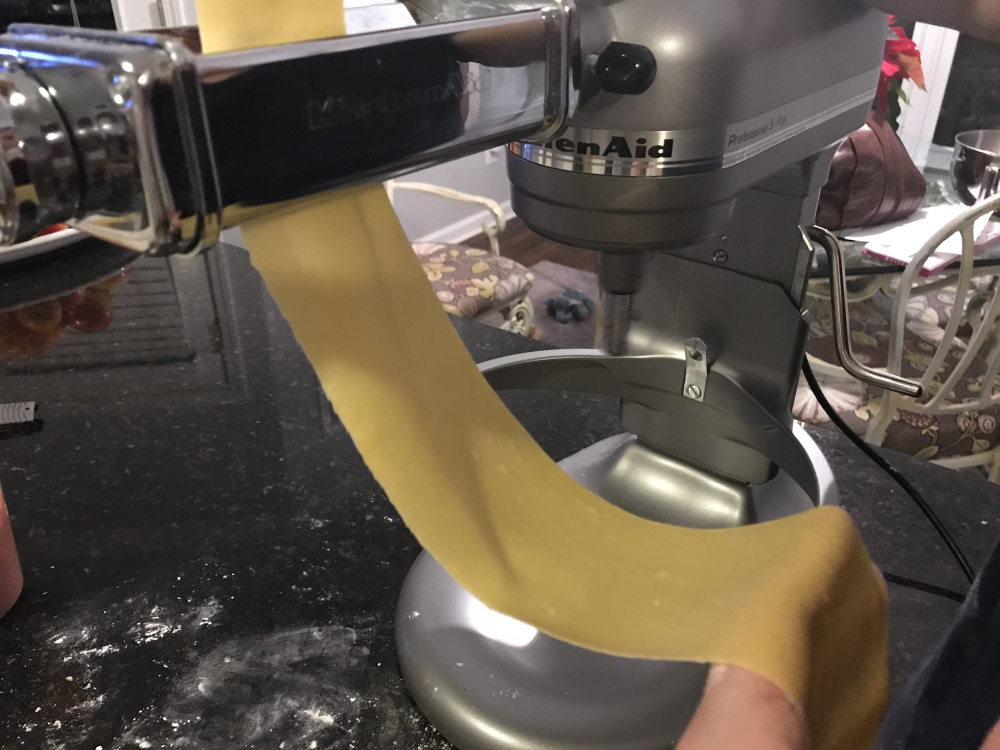I love pasta. Don’t we all? Nothing beats fresh pasta, but it can seem daunting to make from scratch. I’ve tried several recipes and several methods in the past. Some were good and others were downright horrible. I was able to have dinner at The French Laundry in August of 2015 and that experience only left me even more in love with Thomas Keller’s cooking.
I finally got around to trying his pasta and boy, was it worth it! You HAVE to do it by hand. I’ve seen recipes that say you can use a food processor, but you cannot. Knead it by hand and you won’t be disappointed.
Ingredients:
- 8 oz. all purpose flour (important to weigh versus using measuring cups)
- 6 large egg yolks
- 1 large egg
- 1-1/2 teaspoons olive oil
- 1 tablespoon milk

Mound the flour on a board or other surface and create a well in the center, pushing the flour to all sides to make a ring with sides about 1 inch wide. Make sure that the well is wide enough to hold all the eggs without spilling.
Pour the egg yolks, egg, oil, and milk into the well. Use your fingers to break the eggs up. Still using your fingers, begin turning the eggs in a circular motion, keeping them within the well and not allowing them to spill over the sides. This circular motion allows the eggs to gradually pull in flour from the sides of the well; it is important that the flour not be incorporated too rapidly, or your dough will be lumpy. Keep moving the eggs while slowly incorporating the flour. Using a pastry scraper, occasionally push the flour toward the eggs; the flour should be moved only enough to maintain the gradual incorporation of the flour, and the eggs should continue to be contained within the well. The mixture will thicken and eventually get too tight to keep turning with your fingers.

When the dough begins thickening and starts lifting itself from the board, begin incorporating the remaining flour with the pastry scraper by lifting the flour up and over the dough that’s beginning to form and cutting it into the dough. When the remaining flour from the sides of the well has been cut into the dough, the dough will still look shaggy. Bring the dough together with the palms of your hands and form it into a ball. It will look flaky but will hold together.
Knead the dough by pressing it, bit by bit, in a forward motion with the heels of your hands rather than folding it over on itself as you would with a bread dough. Re-form the dough into a ball and repeat the process several times. The dough should feel moist but not sticky. Let the dough rest for a few minutes while you clean the work surface.

Dust the clean work surface with a little flour. Knead the dough by pushing against it in a forward motion with the heels of your hands. Form the dough into a ball again and knead it again. Keep kneading in this forward motion until the dough becomes silky-smooth. The dough is ready when you can pull your finger through it and the dough wants to snap back into place. The kneading process can take anywhere from 10 to 15 minutes. Even if you think you are finished kneading, knead it for an extra ten minutes; you cannot overknead this dough. It is important to work the dough long enough to pass the pull test; otherwise, when it rests, it will collapse.
After 10 minutes.

After 15 minutes.

Double-wrap the dough in plastic wrap to ensure that it does not dry out. Let the dough rest for at least 30 minutes and up to 1 hour before rolling it through a pasta machine. The dough can be made a day ahead, wrapped and refrigerated; bring to room temperature before proceeding.
To form sheets:
Use 1/2 recipe pasta dough, divided into two or three pieces. Run the dough through a pasta machine as for ravioli, but make the sheets wider. Start on the widest setting and work your way down, making the pasta thinner. The size will vary according to the pasta machine used, but the sheets should be at least five inches wide. It is important that your pasta sheet be thin enough so that you can see your fingers through it, but not so thin that it’s translucent. Keep the pasta sheets covered, as they dry out quickly.

This dough can be used to make ravioli, agnolotti, spaghetti, etc. I made lasagna and it was delicious. This is my go-to pasta recipe from now on.






